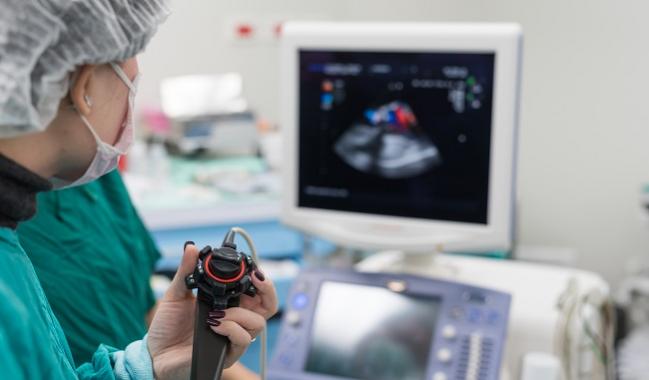Stay Vigilant for Mechanical Complications of Acute MI, Review Urges
While rarer than in the past, free wall, ventricular septum, and papillary muscle ruptures still occur; COVID-19 may mean more.

Serious mechanical complications following acute myocardial infarction have become increasingly rare in the modern era of reperfusion, but despite advances in care, they are every bit as lethal as they’ve always been, making swift diagnosis all the more important, a new review concludes.
Indeed, rapid recognition and revascularization of acute MI has become so widespread that physicians may be out of practice in recognizing the mechanical defects that can arise when symptoms are ignored or care is delayed, senior author Kameswari Maganti, MD (Northwestern University, Chicago, IL), told TCTMD. This is one reason, she said, why mechanical complications are more commonly seen in men than women.
“Despite that fact that these mechanical complications are rare, early recognition becomes crucial because we have therapeutic strategies that we can actually offer to these patients and save lives,” Maganti stressed.
The paper, published in JAMA Cardiology this week with first author Fei Fei Gong, MBBS, PhD (Northwestern University), is especially timely given concerns that patients with cardiovascular symptoms are avoiding hospitals due to stay-at-home orders or concerns about catching COVID-19. Physicians are already saying that they are seeing more ventricular wall and papillary muscle ruptures than they’ve seen in the decades since the advent of fibrinolytics and percutaneous revascularization.
Maganti noted that the review paper was prepared and submitted for consideration before COVID-19 ramped up, but said it may be particularly helpful for physicians unaccustomed to seeing these rare presentations.
“With COVID-19, I worry many of these patients are actually afraid to come in after having had the initial heart attack,” she said, adding that “some of them fear COVID-19 more than the chest pain that they've been having, not knowing that it can be dangerous.”
Physicians less accustomed to seeing mechanical complications might, on the basis of ongoing chest pain symptoms or recent history, send patients for angiography rather than do a quick bedside echo that would quickly mandate a different treatment approach, Maganti added.
Clinical Features, Diagnosis, and Care
The review delves separately into the four kinds of mechanical complications that can arise from myocardial infarction, especially when reperfusion is delayed: left ventricular free-wall rupture, ventricular septal rupture (VSR), papillary muscle rupture (PMR), and pseudoaneurysm and true aneurysm. Most occur within the first week following myocardial infarction, the authors note, and are frequently accompanied by cardiogenic shock or acute pulmonary edema.
Each of the four sections details the clinical features, diagnosis, and treatment, emphasizing the importance of transthoracic echocardiography as the first-line test in most instances, although PMR may require transesophageal echocardiography. Identification of pulmonary edema can typically be made on chest X-ray. In most patients, urgent surgery is needed, although percutaneous options, such as ventricular septal defect closure devices for VSR, may “buy some time,” Maganti said, even if they aren’t a permanent solution. A fifth section addresses mechanical circulatory support, since patients with these complications are “particularly at risk of deteriorating to refractory cardiogenic shock.”
Gong, Maganti, and colleagues stress the low numbers: just 0.27% to 0.91% of STEMI patients develop mechanical complications. To TCTMD, Maganti noted that those rates have “come down beautifully” from what they were in decades past—when they ranged in the literature from 5% to 7.5%. Today, PMR occurs in just 0.05% to 0.26% of acute MIs, ventricular free wall rupture in 0.01% to 0.52%, and VSR in an estimated 0.17% to 0.21% of patients.
“Unfortunately, there has been no significant decrease in associated mortality rates over the past two decades, and patients with mechanical complications are more than fourfold more likely to experience in-hospital mortality than those without mechanical complications,” they write.
To TCTMD, Maganti said she hopes the review will serve as a reminder to physicians to keep mechanical complications in mind, particularly in the COVID-19 era, and that heart team management should become the standard approach—a quick consult with both an interventionalist and a surgeon when mechanical complications are suspected. And quick imaging confirmation, she added, is essential, since it can quickly determine the cause and identify a patient developing cardiogenic shock.
Shelley Wood is the Editor-in-Chief of TCTMD and the Editorial Director at CRF. She did her undergraduate degree at McGill…
Read Full BioSources
Gong FF, Vaitenas I, Malaisrie C, et al. Mechanical complications of acute myocardial infarction: a review. JAMA Cardiol. 2020;Epub ahead of print.
Disclosures
- Gong and Maganti report no relevant disclosures.


Comments